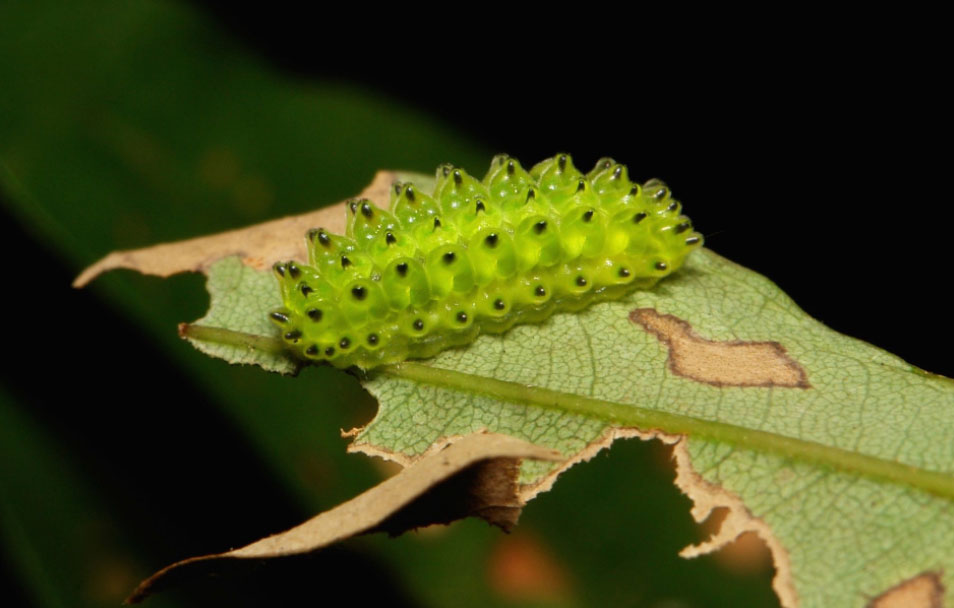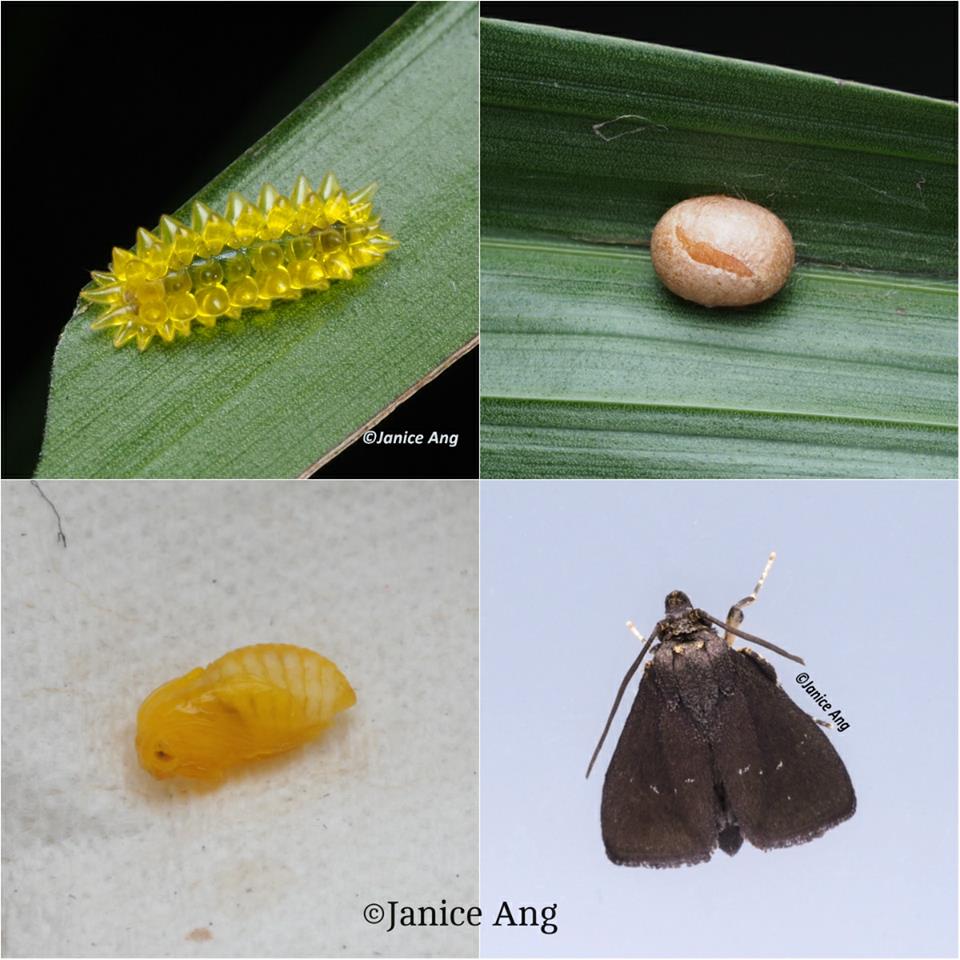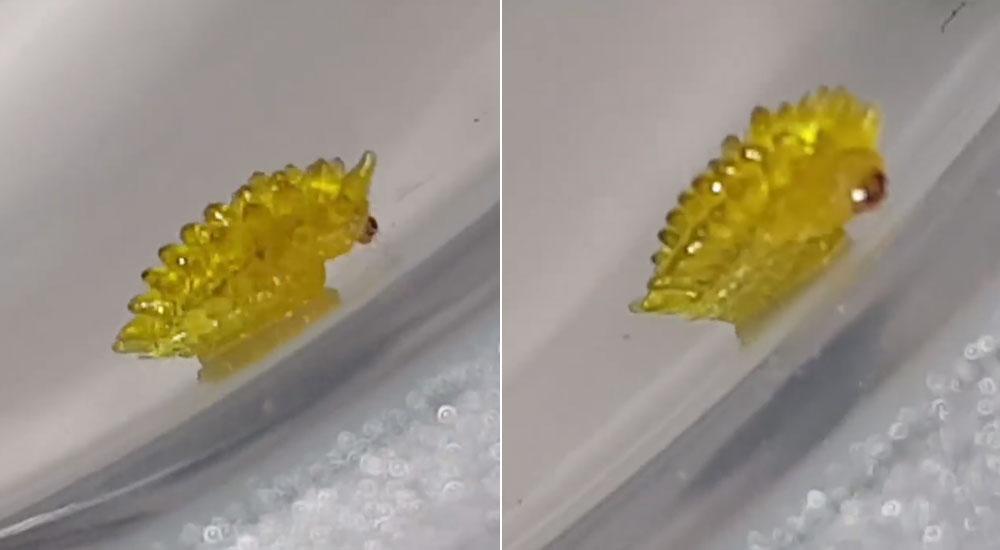Here's what a Pokemon would look like in real life:
[video width="800" height="448" mp4="https://static.mothership.sg/1/2017/10/caterpillar-gummy-bear-singapore.mp4"][/video]
This video by Janice Ang was posted on the Mothing and Moth-watching public Facebook group on Oct. 26, 2017.
According to the post's description, this creature is a caterpillar from the Limacodidae moth family.
It was found on a Macarthur Palm in Singapore. The Macarthur Palm is fairly common here.
Limacodidae moth family
Less frequently witnessed are the caterpillars of the moth family Limacodidae, even though it occurs in tropical and subtropical regions across the globe.
From Yunnan, China:
 Source: John Horstman Twitter
Source: John Horstman Twitter
This is a small non-stinging variety, about 10mm, probably of the genus Olona.
The gelatinous nodules covering the caterpillar are reportedly sheddable on contact, presumably as a defence against predation.
Adult moths are dull in comparison
The adult moths are often quite drab and are called slug moths because their caterpillars bear a distinct resemblance to slugs, and/ or cup moths because of the shape of their cocoons.
But this particular Olona sp., Limacodidae will grow into a creature that looks nothing like before:
 Source: Janice Ang
Source: Janice Ang
What we know about Limacodid larvae
Limacodid larvae are often highly ornamented and brightly coloured.
Two main types can be distinguished: Larvae armed with rows of protuberances bearing stinging spines called "stinging nettle" caterpillars, or non-spined forms where the surface of the larvae may by completely smooth, called "gelatin" caterpillars.
Other forms appear armour-plated or bear sticky detachable tubercles.
The larvae of this family have short legs on their abdominal segments and adhere to the substrate with an adhesive underbelly. This also contributes to the slug-like movement.
Although the moths are well-described and documented in North America and Australia where they occur, the life histories of Limacodid larvae, particularly in Asia, Africa and South America are largely unknown.
Top photo by Janice Ang
If you like what you read, follow us on Facebook, Instagram, Twitter and Telegram to get the latest updates.
